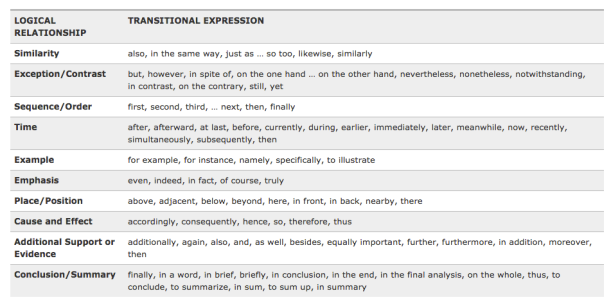Quick update: our next class (12/13) is optional. See schedule.
Pair up with a partner. Read your partner’s draft and answer the following questions in a Microsoft Word document. When you’re done, hand the draft back to your partner, and talk to your partner about your feedback. Email your feedback to your partner so that they have it and can use it to revise, and also to me (imkenned@gmail.com) so that I have a record of it. When you’re done, call me over so that you can show me your work. At that point, you may leave.
I. Organization
- Does your partner provide a clear, identifiable thesis statement at the end of their introductory paragraph? If you can’t find your partner’s thesis statement, try to come up with a thesis statement for them that reflects the analysis in the rest of the paper.
- Is the essay logically organized so far? Does the essay transition smoothly from paragraph to paragraph? If there are any topic sentences that don’t transition clearly from the previous paragraph, revise them so that they do (actually write on your partner’s draft to do this). A good way to do this is to insert a transitional device in the topic sentence in need of revision. A list of transitional devices and their functions in relation to previous paragraphs–e.g. to indicate similarity to the previous paragraph, cause and effect, exception/contrast, etc.–can be found below.

For instance, pretend in your Project 4 that your thesis statement claims that your main area of growth over the semester was in learning to better organize your ideas. Maybe in high school you found you were always good at coming up with ideas, but struggled when it came time to get those ideas down onto paper in an organized, logically presented fashion–and Comp 105 improved this.
In the body of such an essay, you might therefore have a paragraph focusing on how practicing rhetorical analysis of logos helped you to better see how other people logically structure their arguments. You then might have another paragraph explaining how learning the stasis forms also helped you develop in this manner, since it gave you a way to break down your arguments into different stasis forms. Pretend we’re transitioning from the former paragraph to the latter paragraph. What would a good transitional device be here–what kind of logical relationship are we trying to express between these paragraphs?
II. Thoughtfulness and Thoroughness of Response
- Does your partner delve into enough detail with examples and evidence from their work in the class? For example, if your partner asserts that they’ve improved on writing with a specific target audience in mind, do they cite (for instance) a particular revision they made in Project 3 that proves this, or do they just make that assertion without backing it up with evidence? If there’s any room for improvement at all in this category–and I’d be surprised if there isn’t–specify what needs to be improved and speculate about how to improve it.
III. Clarity of the Writing
- Is the essay clearly written so far, with standard spelling, grammar, and punctuation? In addition to giving a general answer about the paper’s clarity as a whole, make sure you actually run through your partner’s draft with a pen and pencil and mark any specific grammatical/spelling errors.